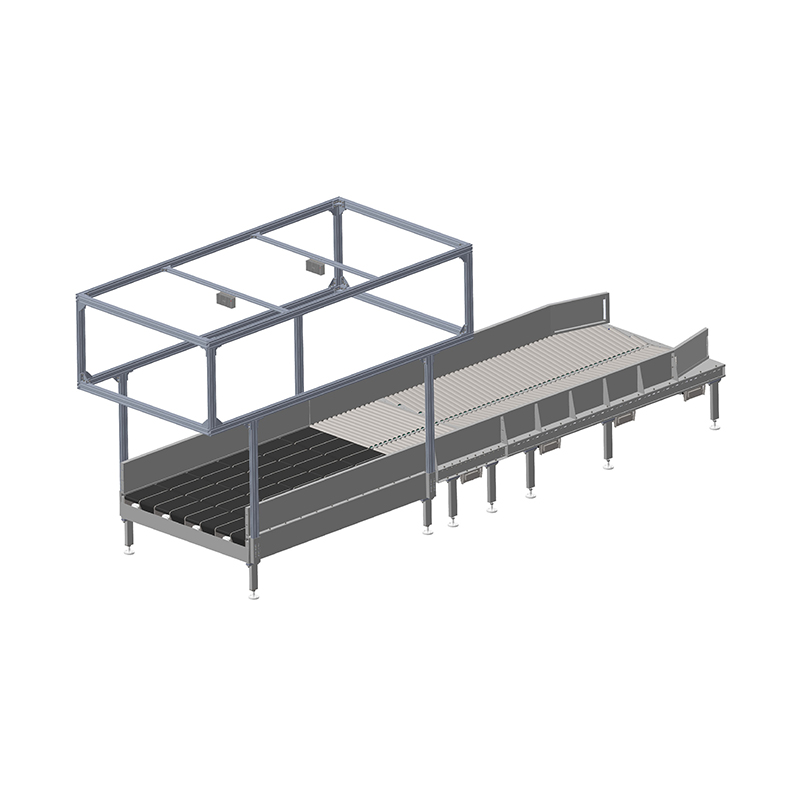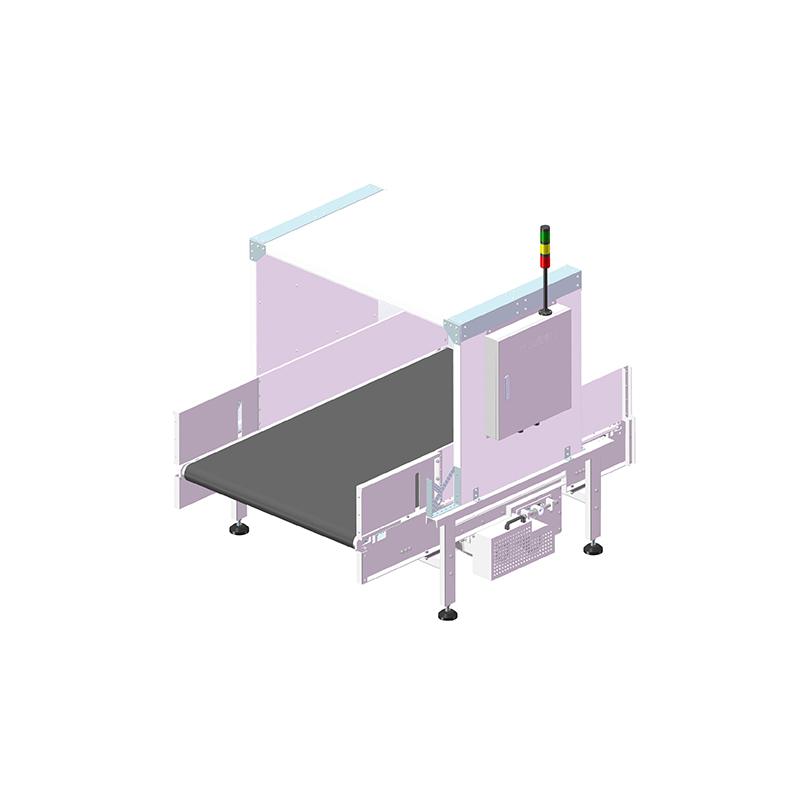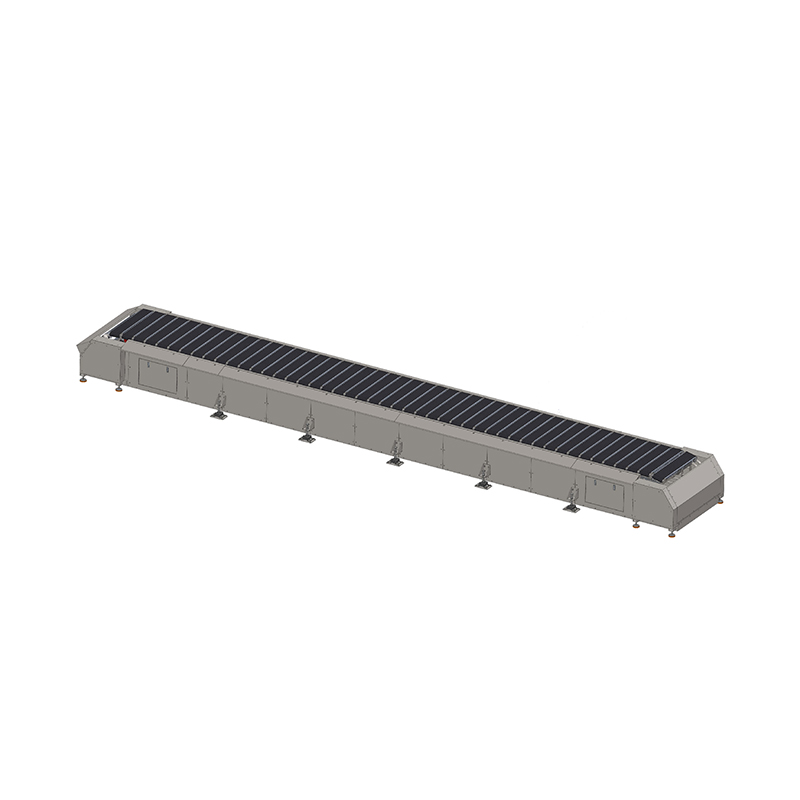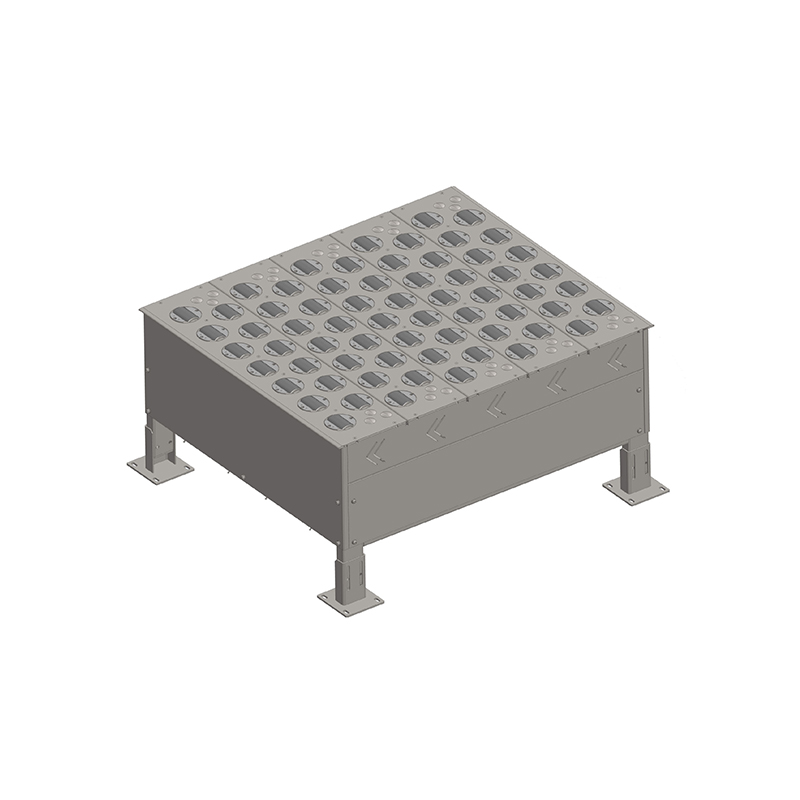Roller conveyor: a powerful assistant for modern industrial production and logistics
Release Time : 2025-02-26
In the field of modern industry and logistics, the use of automated equipment has become a key factor in improving efficiency and reducing costs. As a widely used material conveying equipment, roller conveyors have become an indispensable "powerful assistant" in modern production lines and logistics systems with their superior performance and diverse application scenarios. From industrial manufacturing to commodity distribution, roller conveyors have effectively improved production efficiency and logistics operation speed through automation. This article will explore in depth the working principle, application field and importance of roller conveyors in modern industrial production and logistics systems.

1. Working principle and composition of roller conveyors
Roller conveyors are a type of conveying equipment that uses the rotation of rollers (or rollers) to drive the movement of materials. The basic principle is to use rollers installed in the conveyor frame to push the material forward by friction or power transmission.
1. Structural composition
- Roller: The roller is the core component of the conveyor, usually made of metal materials, with wear-resistant and corrosion-resistant characteristics. Depending on the load requirements, the diameter, material and number of rollers vary.
- Conveyor belt/chain: The driving part of the roller conveyor, which drives the roller to rotate through a belt or chain transmission system.
- Drive device: The motor or other power source transmits power to the roller through the transmission system to drive the material to move.
- Frame and support structure: As the skeleton supporting the roller and the entire conveying system, the frame is usually made of steel, which is strong and can withstand large weight and pressure.
2. Working principle
- When the drive device is started, the conveyor belt or chain is driven by the motor to make the roller connected to it start to rotate.
- The material is placed on the roller, and the friction force on the surface of the roller pushes the material forward. Since the rollers usually have a certain spacing and arrangement, the conveyor can adapt to items of different shapes and sizes.
- According to specific production needs, roller conveyors can be equipped with different types of drive methods, such as gravity, friction, automatic drive, etc.
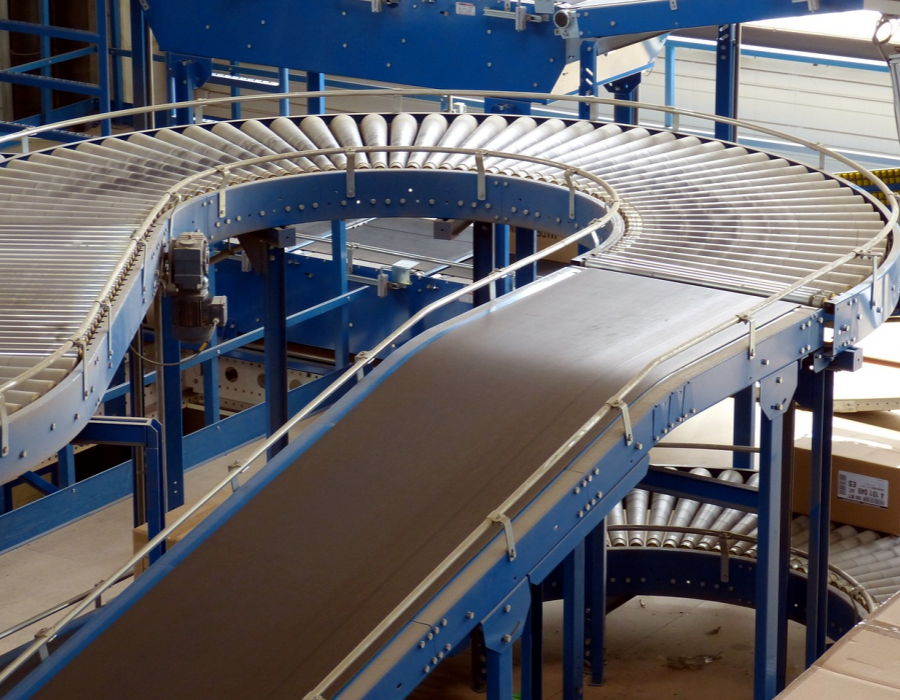
2. Application fields of roller conveyors
Roller conveyors have been widely used in various industries, especially in logistics, manufacturing and automated production lines. Here are some typical application scenarios:
1. Manufacturing and assembly lines
Roller conveyors are often used in assembly lines and production lines to transfer materials between multiple stations. Due to their efficient transportation capacity, roller conveyors can transport various parts and components at a high frequency to ensure the continuity of the production process. Especially in the fields of automobile manufacturing, electrical equipment, and home appliance production, roller conveyors have greatly improved the automation and efficiency of production lines.
2. Warehousing and logistics management
In modern logistics systems, the role of roller conveyors is particularly prominent. It not only improves sorting speed, but also greatly reduces labor costs. In large warehouses and distribution centers, roller conveyors usually work in conjunction with other automated equipment (such as robots and automated storage and retrieval systems) for rapid cargo handling, sorting, and distribution. Especially in the e-commerce and express delivery industries, roller conveyors have helped companies significantly improve their ability to process orders.
3. Food and beverage industry
In the food processing and beverage production industries, roller conveyors are widely used for finished product packaging, material transportation, and material connection between production lines due to their easy cleaning and corrosion resistance. The smooth operation of roller conveyors is of great significance for improving the hygiene level of the production process and reducing cross contamination.
4. Pharmaceutical industry
In the pharmaceutical industry, roller conveyors are used in the production, packaging and sorting of medicines. Its precise control system ensures the safety and quality of products and avoids contamination or errors caused by improper manual operation.
5. Minerals and heavy industries
In the fields of minerals, steel and other heavy industries, roller conveyors can withstand heavy loads and are widely used in the transportation of bulk materials such as ore, coal, and steel. Due to its strong durability and adaptability to harsh environments, it is widely used in these industries.
3. Advantages and technological development of roller conveyors
1. Efficiency and automation
As an automated equipment, roller conveyors can reduce manual handling during material transportation to a minimum, thereby improving overall production efficiency. At the same time, through the combination with automatic control systems (such as PLC, sensors, etc.), the intelligence level of roller conveyors is also constantly improving, making the material transportation process more accurate and efficient.
2. Adaptability and flexibility
Roller conveyors can be customized according to the size, weight, shape and other characteristics of the items, and can adapt to a variety of different production environments and material types. In addition, the modular design of roller conveyors allows them to be flexibly configured as needed, and can easily cope with changing production needs.
3. Energy saving and environmental protection
With the continuous development of energy conservation, emission reduction and environmental protection concepts, the design of modern roller conveyors pays more attention to energy efficiency. The use of high-efficiency motors and intelligent control systems can reduce energy consumption and reduce the operating costs of enterprises. At the same time, the roller conveyor has a high degree of automation, which can effectively reduce the waste of resources caused by manual operation.
4. Low maintenance cost
The roller conveyor has a relatively simple structure, long service life and low failure rate, which means that its maintenance cost is low. Even in a high-load working environment, the roller conveyor can maintain a high stability and reduce the risk of equipment downtime.
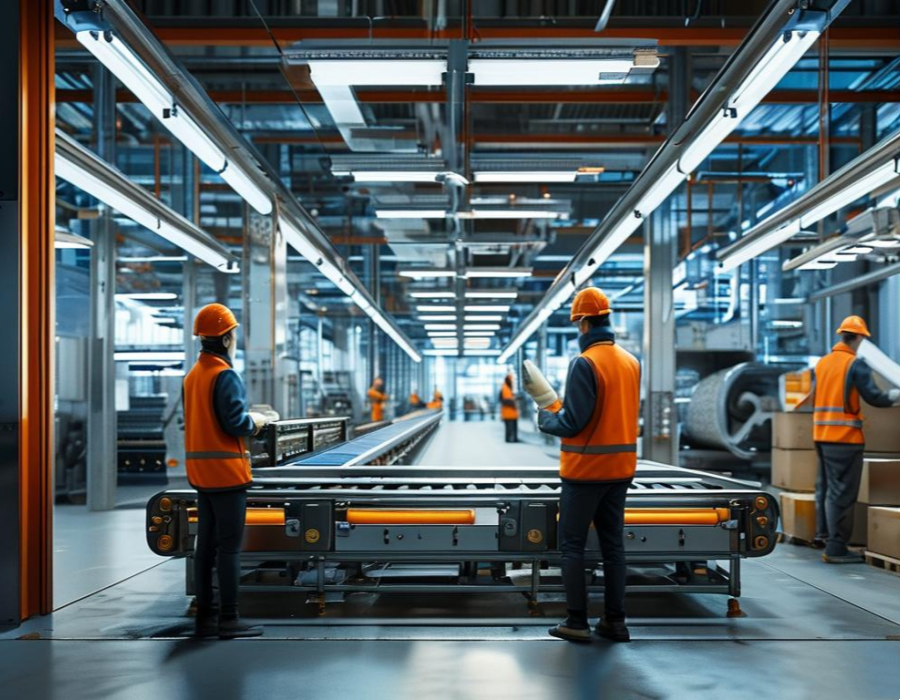
As an important equipment in modern industrial production and logistics systems, roller conveyors have become a core component of many industries with their high efficiency, flexibility and low maintenance. Whether in the production line of manufacturing or in the cargo sorting link of logistics center, roller conveyor plays an important role. With the continuous development of automation technology and the continuous improvement of production demand, the application field of roller conveyor will be more extensive, and the technical level will continue to improve, helping enterprises to further improve production efficiency, reduce operating costs, and promote the development of modern industry and logistics.

1. Working principle and composition of roller conveyors
Roller conveyors are a type of conveying equipment that uses the rotation of rollers (or rollers) to drive the movement of materials. The basic principle is to use rollers installed in the conveyor frame to push the material forward by friction or power transmission.
1. Structural composition
- Roller: The roller is the core component of the conveyor, usually made of metal materials, with wear-resistant and corrosion-resistant characteristics. Depending on the load requirements, the diameter, material and number of rollers vary.
- Conveyor belt/chain: The driving part of the roller conveyor, which drives the roller to rotate through a belt or chain transmission system.
- Drive device: The motor or other power source transmits power to the roller through the transmission system to drive the material to move.
- Frame and support structure: As the skeleton supporting the roller and the entire conveying system, the frame is usually made of steel, which is strong and can withstand large weight and pressure.
2. Working principle
- When the drive device is started, the conveyor belt or chain is driven by the motor to make the roller connected to it start to rotate.
- The material is placed on the roller, and the friction force on the surface of the roller pushes the material forward. Since the rollers usually have a certain spacing and arrangement, the conveyor can adapt to items of different shapes and sizes.
- According to specific production needs, roller conveyors can be equipped with different types of drive methods, such as gravity, friction, automatic drive, etc.

2. Application fields of roller conveyors
Roller conveyors have been widely used in various industries, especially in logistics, manufacturing and automated production lines. Here are some typical application scenarios:
1. Manufacturing and assembly lines
Roller conveyors are often used in assembly lines and production lines to transfer materials between multiple stations. Due to their efficient transportation capacity, roller conveyors can transport various parts and components at a high frequency to ensure the continuity of the production process. Especially in the fields of automobile manufacturing, electrical equipment, and home appliance production, roller conveyors have greatly improved the automation and efficiency of production lines.
2. Warehousing and logistics management
In modern logistics systems, the role of roller conveyors is particularly prominent. It not only improves sorting speed, but also greatly reduces labor costs. In large warehouses and distribution centers, roller conveyors usually work in conjunction with other automated equipment (such as robots and automated storage and retrieval systems) for rapid cargo handling, sorting, and distribution. Especially in the e-commerce and express delivery industries, roller conveyors have helped companies significantly improve their ability to process orders.
3. Food and beverage industry
In the food processing and beverage production industries, roller conveyors are widely used for finished product packaging, material transportation, and material connection between production lines due to their easy cleaning and corrosion resistance. The smooth operation of roller conveyors is of great significance for improving the hygiene level of the production process and reducing cross contamination.
4. Pharmaceutical industry
In the pharmaceutical industry, roller conveyors are used in the production, packaging and sorting of medicines. Its precise control system ensures the safety and quality of products and avoids contamination or errors caused by improper manual operation.
5. Minerals and heavy industries
In the fields of minerals, steel and other heavy industries, roller conveyors can withstand heavy loads and are widely used in the transportation of bulk materials such as ore, coal, and steel. Due to its strong durability and adaptability to harsh environments, it is widely used in these industries.
3. Advantages and technological development of roller conveyors
1. Efficiency and automation
As an automated equipment, roller conveyors can reduce manual handling during material transportation to a minimum, thereby improving overall production efficiency. At the same time, through the combination with automatic control systems (such as PLC, sensors, etc.), the intelligence level of roller conveyors is also constantly improving, making the material transportation process more accurate and efficient.
2. Adaptability and flexibility
Roller conveyors can be customized according to the size, weight, shape and other characteristics of the items, and can adapt to a variety of different production environments and material types. In addition, the modular design of roller conveyors allows them to be flexibly configured as needed, and can easily cope with changing production needs.
3. Energy saving and environmental protection
With the continuous development of energy conservation, emission reduction and environmental protection concepts, the design of modern roller conveyors pays more attention to energy efficiency. The use of high-efficiency motors and intelligent control systems can reduce energy consumption and reduce the operating costs of enterprises. At the same time, the roller conveyor has a high degree of automation, which can effectively reduce the waste of resources caused by manual operation.
4. Low maintenance cost
The roller conveyor has a relatively simple structure, long service life and low failure rate, which means that its maintenance cost is low. Even in a high-load working environment, the roller conveyor can maintain a high stability and reduce the risk of equipment downtime.

As an important equipment in modern industrial production and logistics systems, roller conveyors have become a core component of many industries with their high efficiency, flexibility and low maintenance. Whether in the production line of manufacturing or in the cargo sorting link of logistics center, roller conveyor plays an important role. With the continuous development of automation technology and the continuous improvement of production demand, the application field of roller conveyor will be more extensive, and the technical level will continue to improve, helping enterprises to further improve production efficiency, reduce operating costs, and promote the development of modern industry and logistics.


